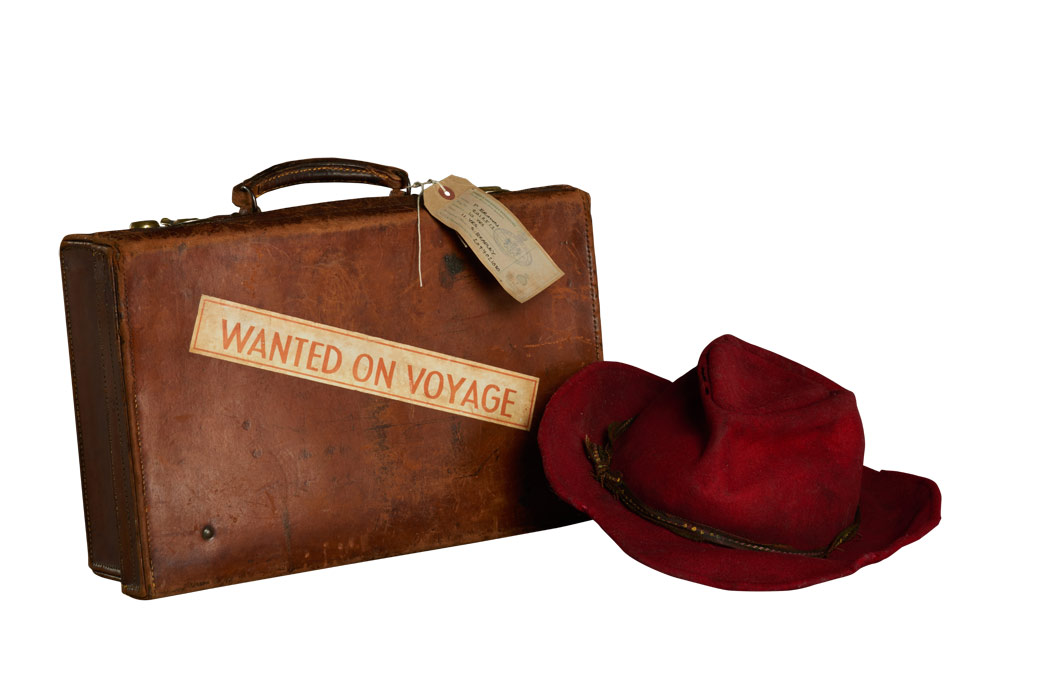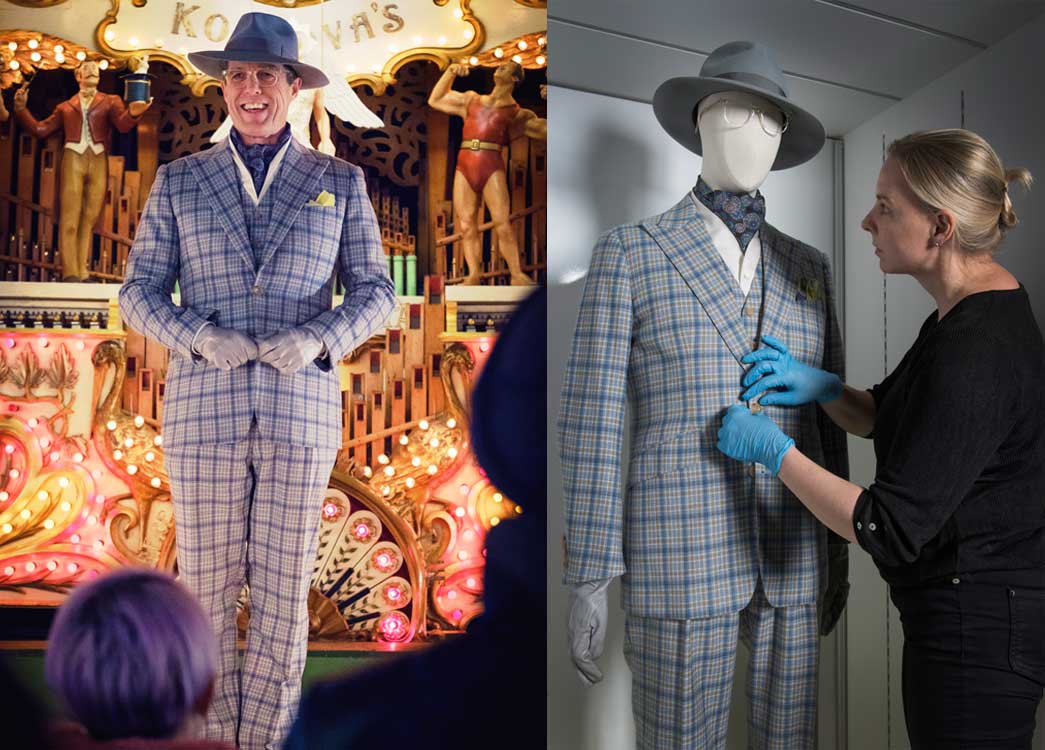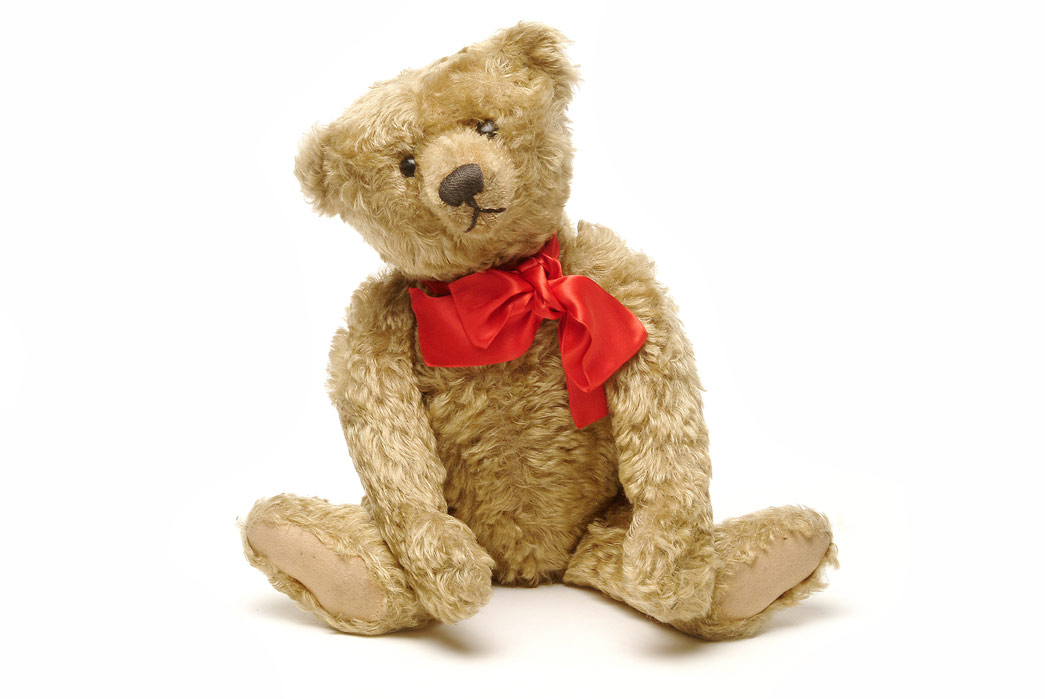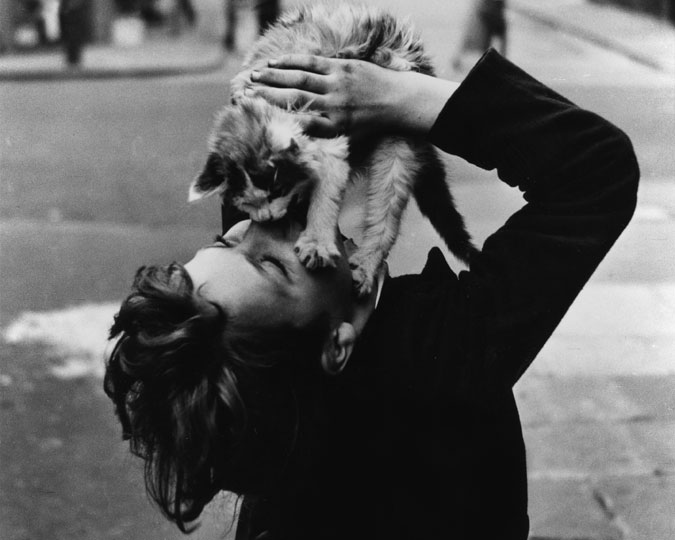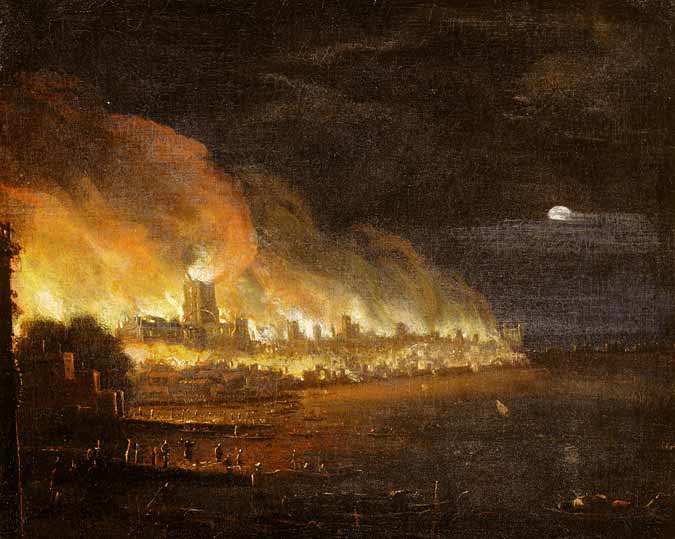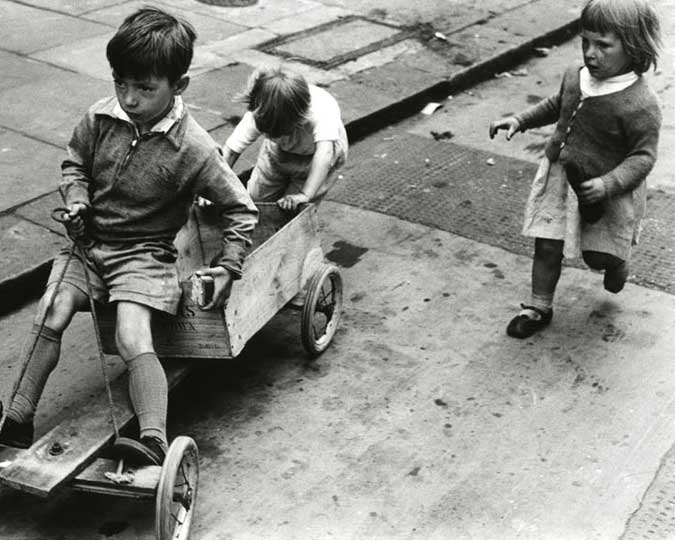In autumn 2017, a very special bear paid a visit to the Museum of London, all the way from Darkest Peru - Paddington, iconic character and star of upcoming film Paddington 2. Let's look at some of the wonderful costumes on display, and other signs of London's childhood favourites in the museum's collections.
London has a very special place in children’s literature, as the home of beloved characters from Mary Poppins and Peter Pan through to the One Hundred and One Dalmatians and Paddington Bear. Although many of these characters have now reached a venerable age - Peter Pan first appeared in print over 100 years ago, and Paddington celebrates his 60th birthday next year - there’s something very special about these stories. There’s an element of timelessness about them: they continue to capture the imagination of children today, just as they did when they first appeared on our bookshelves.
Katherine Woodfine, author of the Sinclair's Mysteries. Katherine spoke during the events of Half Term with Paddington.
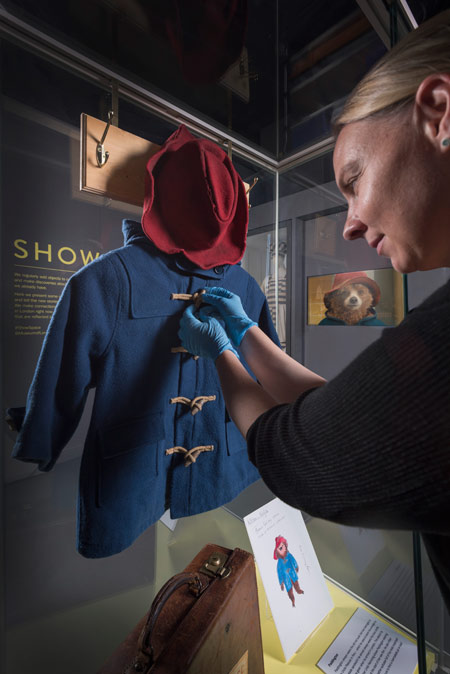
Paddington goes on show
Museum of London curator Natasha Fenner displays a costume from Paddington 2 in Show Space. © Paddington and Company Limited/StudioCanal S.A.S 2017
This half term we're showing a special display centred on one of the most iconic of London's characters, Paddington. The duffle coat and hat are now instantly recognisable, almost unchanged from their first appearance on the cover of Michael Bond's 1958 book, A Bear Called Paddington.
Like many of the best-loved children's characters, the original story of Paddington has created a whole fictional universe, a charming, story-book London that has been depicted in multiple books, television programmes and now two feature films.
Some of the fantastic costumes worn during the filming of Paddington 2 are exhibited in the Museum of London's Show Space display until 19 December 2017. You can see props, and sketches, as well as clips from the film Paddington 2 (opening 10 November).

Peter Pan costume, 1911
Of course, Paddington isn't the first of the many iconic childhood characters invented in London to make a mark at the museum.
Peter Pan, the boy who never grew up, found fame in a play by J.M. Barrie, first performed at the Duke of York's Theatre on 27 December 1904. The play was hugely popular, remaining as a major part of the London Christmas season for years to come. The actor Pauline Chase played the role of Peter Pan at the Duke of York's theatre annually from 1906 until 1913. Traditionally the role of Peter Pan was always played by female actors.
Note the net wings attached to the russet sleeves of this costume, which match Barrie's description of Peter Pan as being dressed in "autumn leaves and cobwebs". The costume comes with a wooden theatrical dagger with a silver painted blade and crudely carved handle, ideal for duelling pirates.
The play was so successful that Barrie adapted it into a novel, and Peter Pan has become an enduring figure in children's fiction. He's an iconic character caught between two worlds, the everyday London of Kensington Gardens and the dramatic fantasy of Neverland, complete with mermaids, Indians and Lost Boys to play with and battle.
This toy in the Museum of London Collection, now over a hundred years old, is no ordinary teddy bear. It's one of the first of its kind, produced by the German Steiff factory, who designed and sold the first plush toy bear with jointed arms and legs. These bears were named after the American President Theodore ("Teddy") Roosevelt, after a legend spread that he spared the life of a bear cub while on a hunting trip. After being exhibited at the Leipzig Toy Fair in 1903, the teddy's popularity skyrocketed, and soon children across Europe and America were clamouring for a bear of their own. This example comes from 1907, and was given to the eldest son of the person who donated it to the museum. The plush-coloured fur is made of mohair, a silky fabric woven from goat's wool, and the bear makes a growling sound when the stomach is pressed. The popularity of teddy bears quickly made a mark on children's fiction, inspiring characters from Winnie the Pooh to Paddington himself.
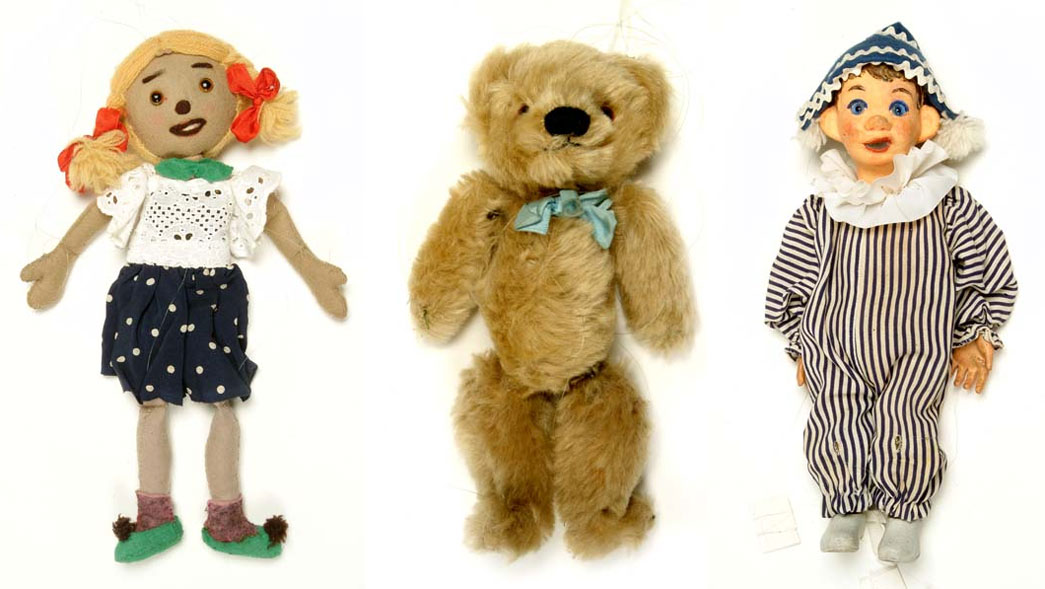
Puppets used in the Andy Pandy children's programme, c.1950
Andy Pandy, Teddy and Looby Loo string puppets used in the BBC's Watch with Mother series.

Ben string puppet used in the television programme The Flowerpot Men, c. 1952
By the 1950s, teddy bears were assumed to be part of every child's toy chest, and 'Teddy' was one of the original characters on the BBC television show 'Andy Pandy'. These puppets are the original ones used in the filming of the 'Watch with Mother' series, designed for a pre-school audience. The title echoed the BBC radio programme 'Listen With Mother' and was intended to allay fears that children were being corrupted by watching television alone.
This puppet comes from The Flowerpot Men, first aired in December 1952, which later became another staple of 'Watch With Mother'. The programme's main characters, Bill and Ben, lived in flowerpots at the end of a garden. Voiced by Peter Hawkins, Bill and Ben spoke in their own fantasy language, officially called 'Oddle Poddle' which featured words like 'flobbadob'. Some parents complained that 'Oddle Poddle' would encourage poor language skills among children.
These puppets are now among the toys displayed in our People's City gallery, testament to their enduring mark on children's television.
You can see our free Paddington 2 display at the Museum of London until 19 December 2017.








